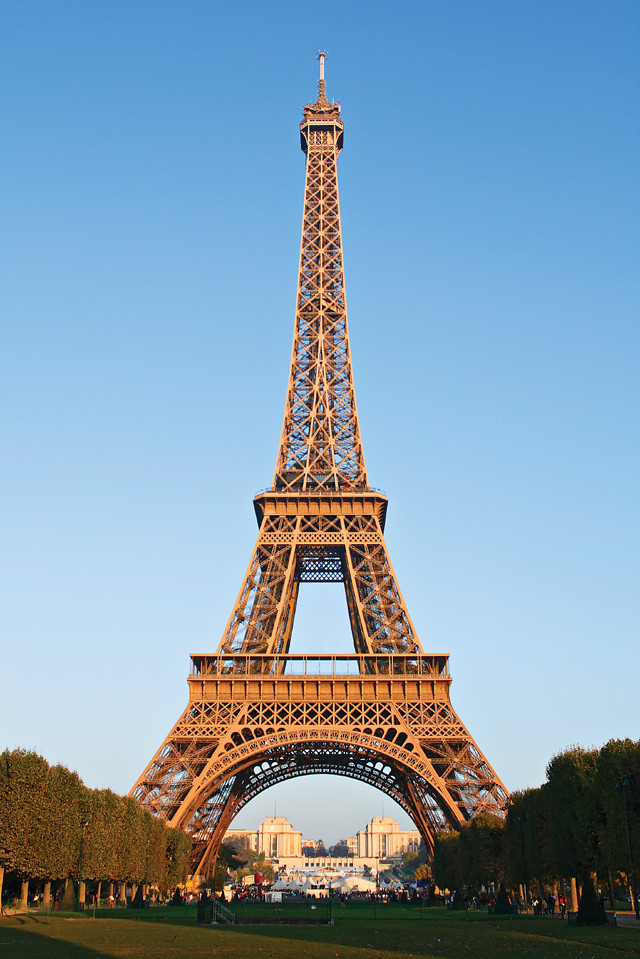
by U.S. Geological Survey Thursday, June 14, 2018
Amy C. Tolcin, a mineral commodity specialist for the U.S. Geological Survey, compiled the following information on zinc, an essential metal for industrial development and a vital nutrient for plants and animals.

If the Eiffel Tower's cast iron had been galvanized with zinc prior to construction, it would have needed far fewer repaintings. Credit: ©iStockphoto.com/S. Greg Panosian
Zinc is the fourth most-widely consumed metal, following iron, aluminum and copper. The Romans were the first to use zinc. To produce brass, they smelted copper with calamine (a zinc ore) to make an alloy more golden in color than bronze (a copper-tin alloy), which they called calamine brass. They were unaware zinc was involved.
Zinc is the 23rd most abundant element in Earth’s crust. Of the few economically important zinc minerals, sphalerite, a zinc sulfide often with iron in it, is the principal zinc-bearing mineral in most global zinc ore production. Sphalerite often contains trace elements that substitute for zinc atoms in the mineral’s crystal lattice. Thus, sphalerite is also a significant source for some minor metal production, including cadmium, germanium and indium.
The ore from most exploitable zinc deposits is typically mined underground; however, there are several large-scale open pit zinc mines, including the largest zinc-producing mine in the world: Alaska’s Red Dog Mine.
Zinc is a ubiquitously used and versatile metal desired for its anticorrosive properties; its ability to bond to steel; its high malleability at low temperatures; and its healing properties.
Galvanizing steel, a process in which zinc is applied as a coating to protect steel from corrosion, is the leading use of zinc and accounts for about half of global consumption. Copper-based brass, bronze alloys and zinc-based alloys — used in automobiles, electrical components and household fixtures — are the next leading uses, each accounting for 17 percent of consumption. Zinc oxide, the most important zinc chemical by production volume, is consumed in rubber manufacturing and also as a protective skin ointment.
For more information on zinc and other mineral resources, visit http://minerals.usgs.gov/minerals.
About 40 countries produce zinc ores and concentrates, and 30 countries produce refined zinc. China is the leading producer of zinc in concentrate and refined zinc, and is also the leading consumer of refined zinc.
Metallic zinc was first extracted in India, sometime between the 11th and 14th centuries. Since 1982, the penny has been copper-plated zinc with an overall composition of 97.5 percent zinc and 2.5 percent copper. A pure copper penny was last minted for circulation in 1837. An average adult human contains 2,000 grams of metals, of which two to three grams is zinc. Zinc allows the body’s enzymes and immune system to function properly, allows for proper development and growth, and is necessary for taste, smell and wound healing. Zinc oxide-based sunscreens provide the best protection from broad-spectrum ultraviolet radiation. The Eiffel Tower, made of cast iron, needs to be repainted every seven years to prevent corrosion. If the cast iron had been galvanized with zinc prior to construction, only seven large-scale repaintings would have been required — compared with the 17 that have taken place since the tower’s construction in 1889.
© 2008-2021. All rights reserved. Any copying, redistribution or retransmission of any of the contents of this service without the expressed written permission of the American Geosciences Institute is expressly prohibited. Click here for all copyright requests.